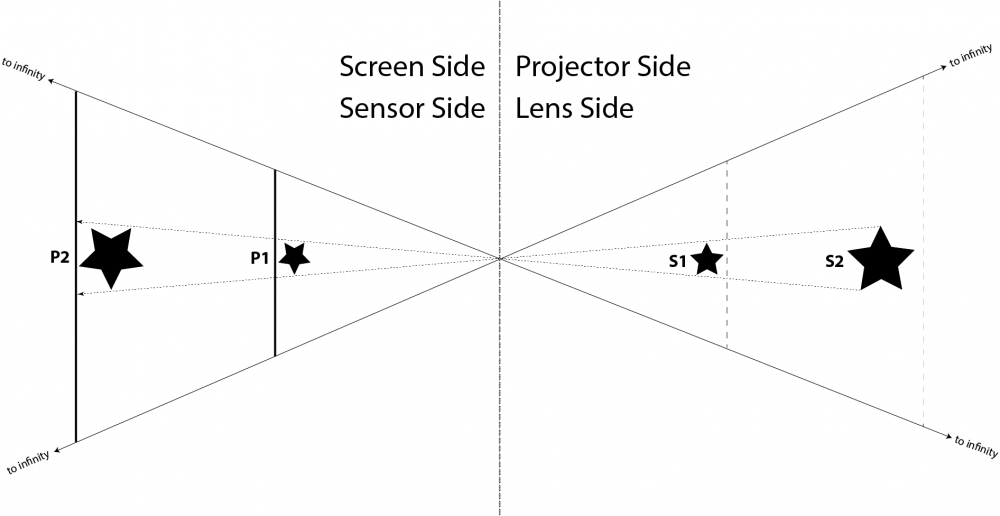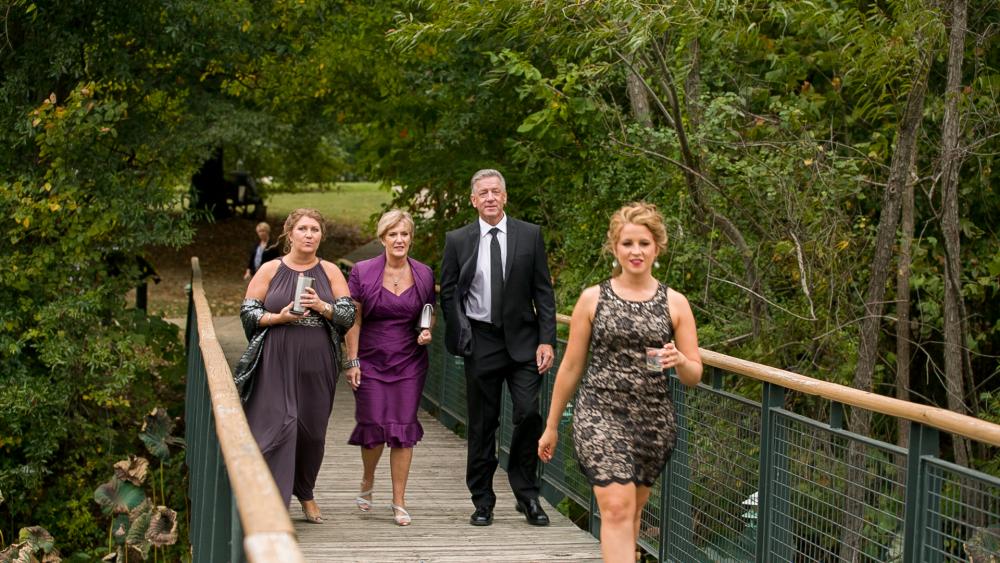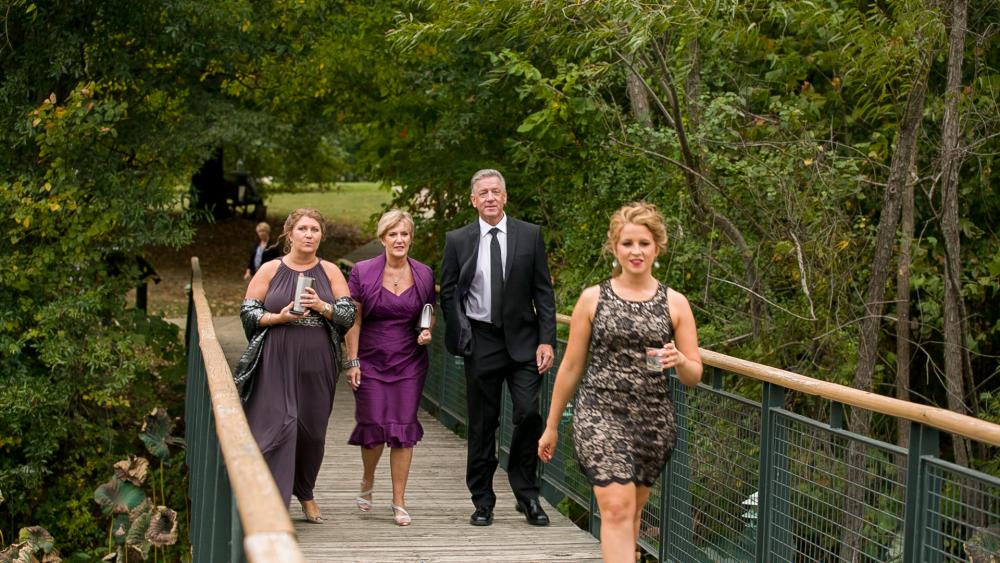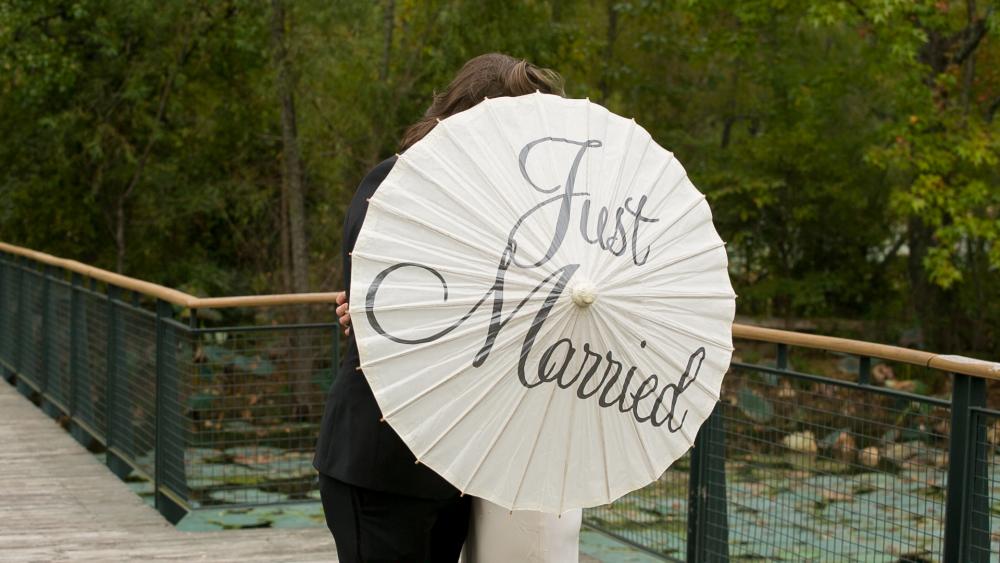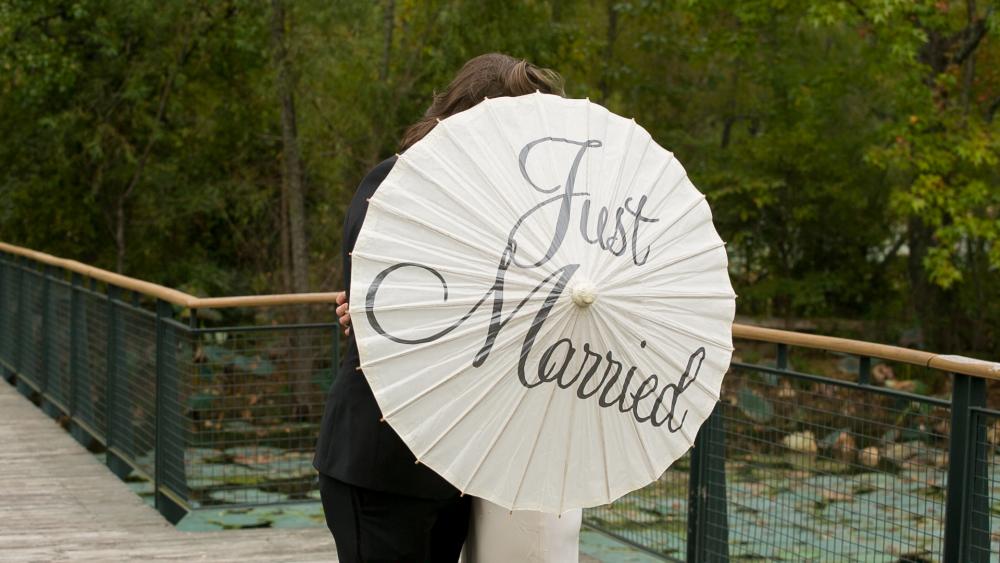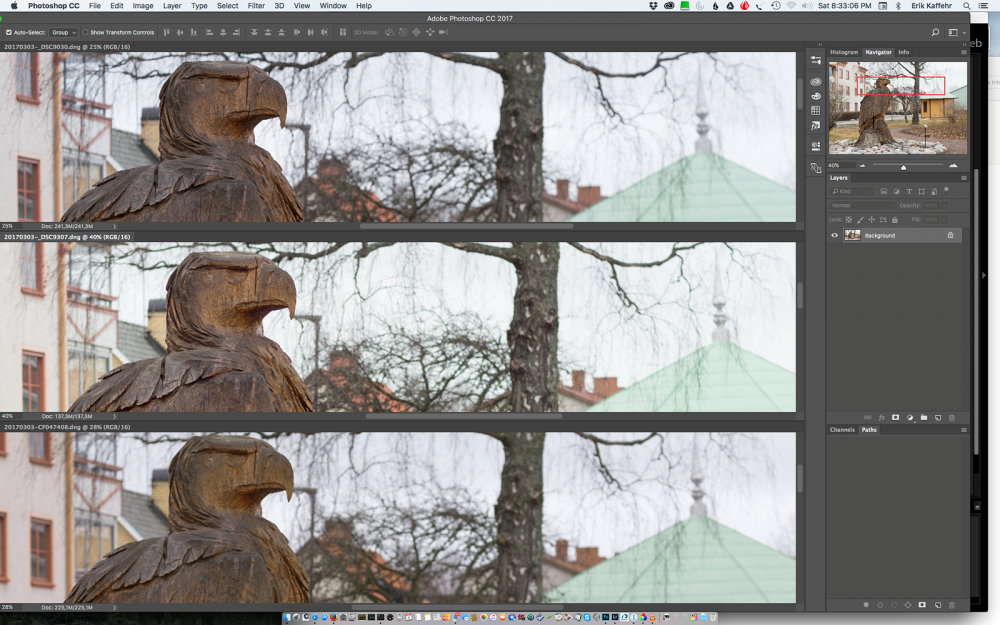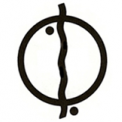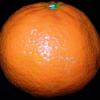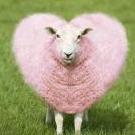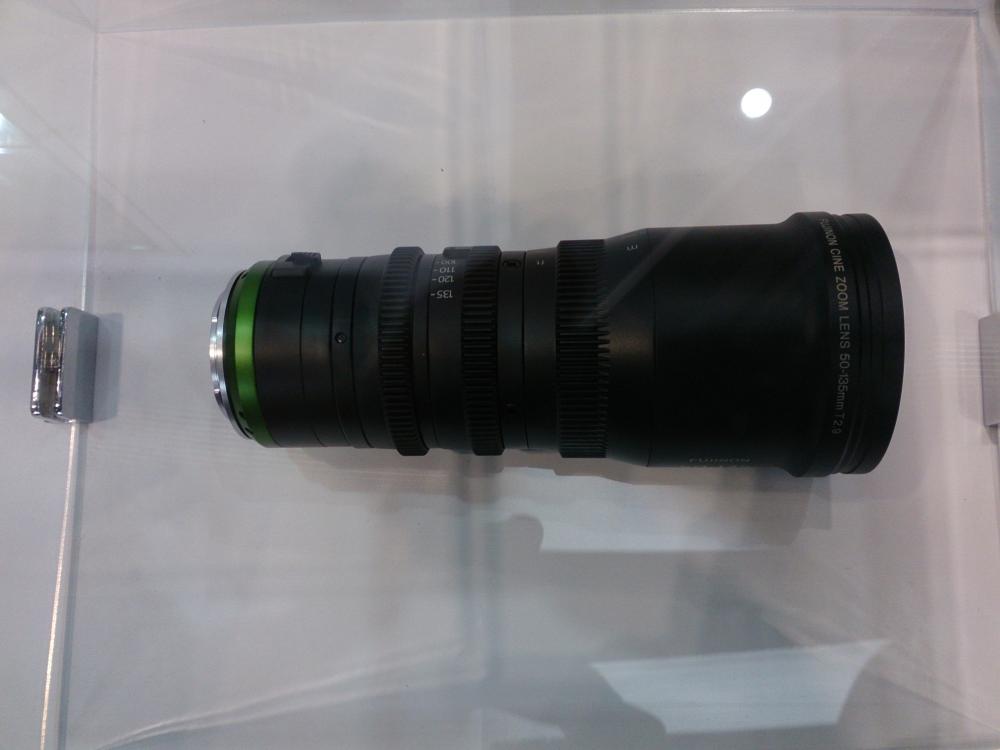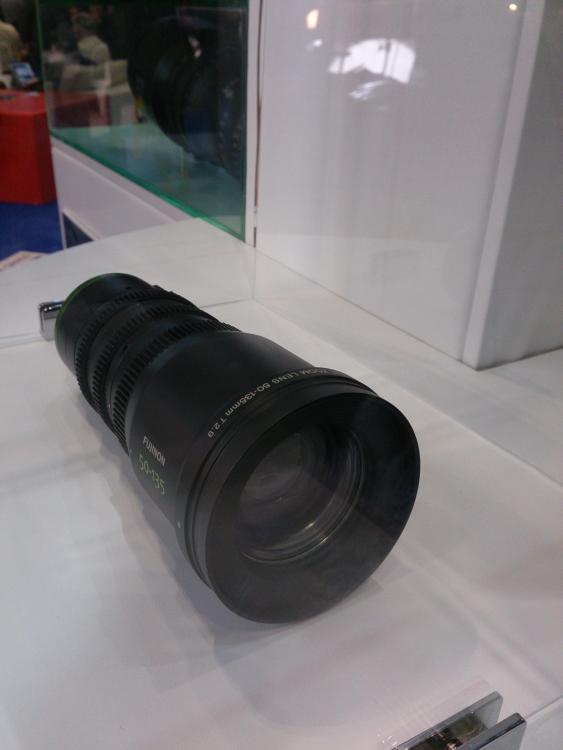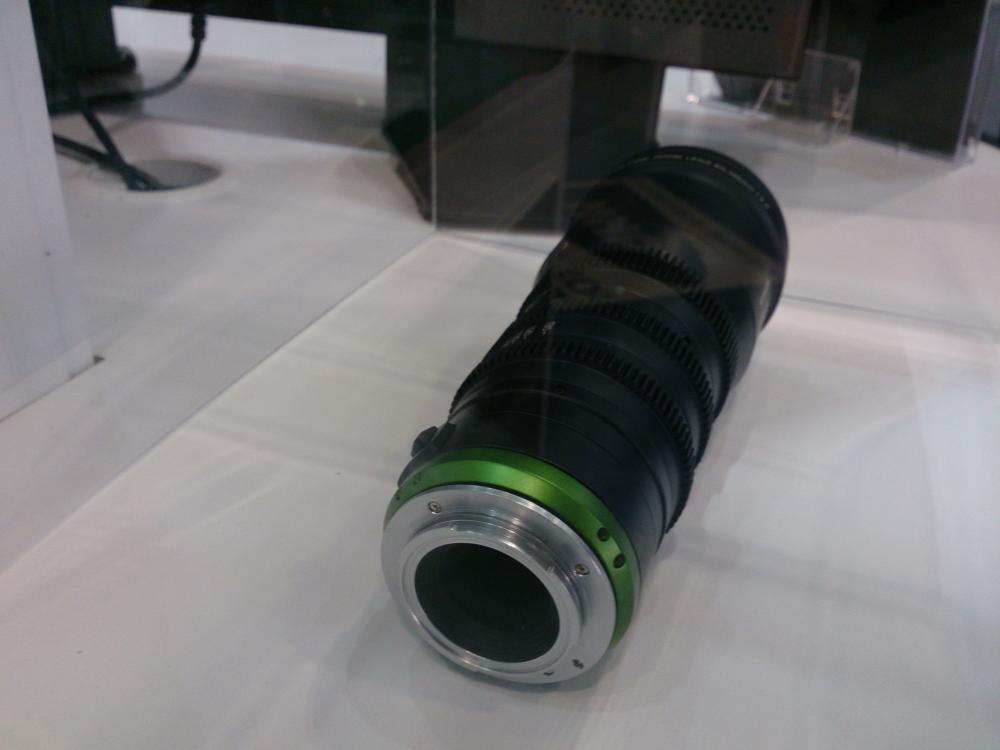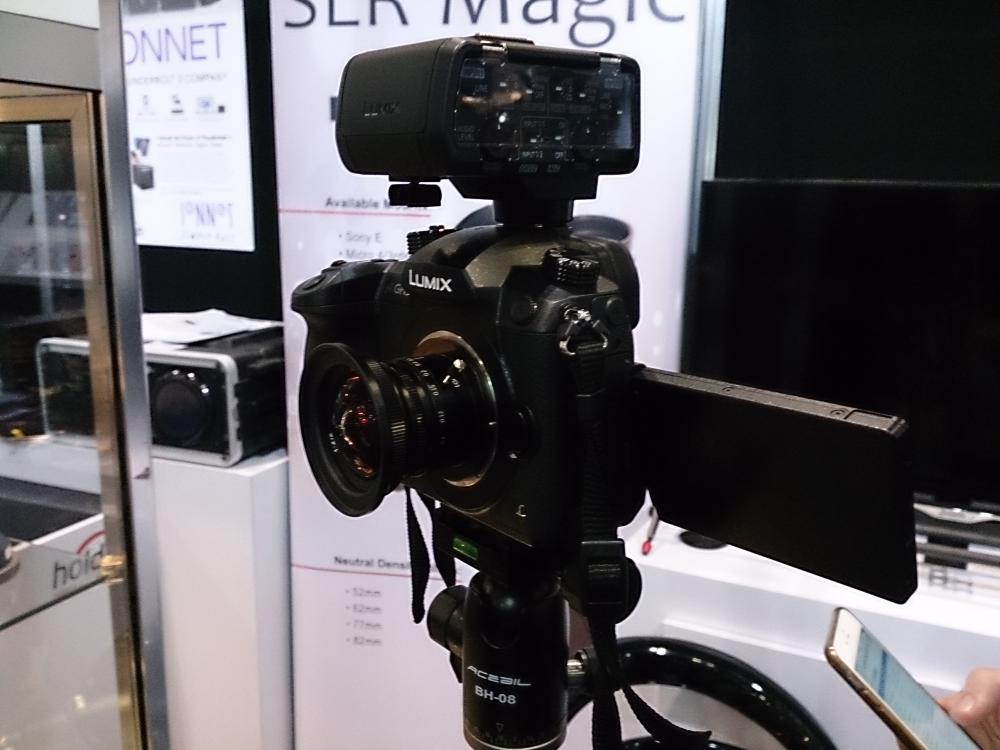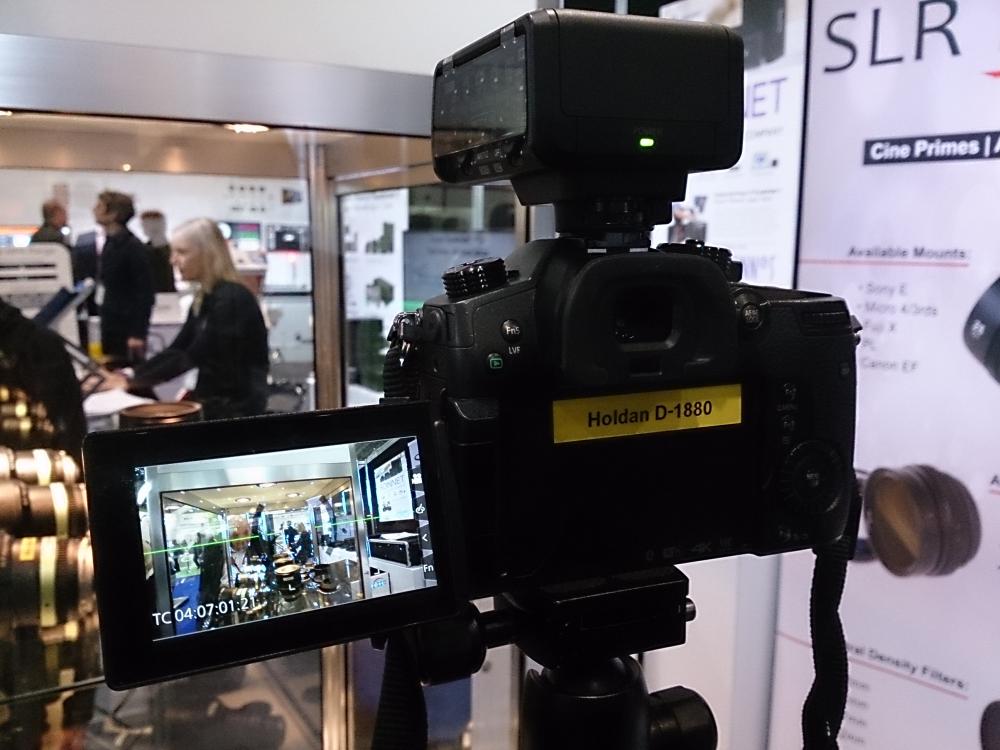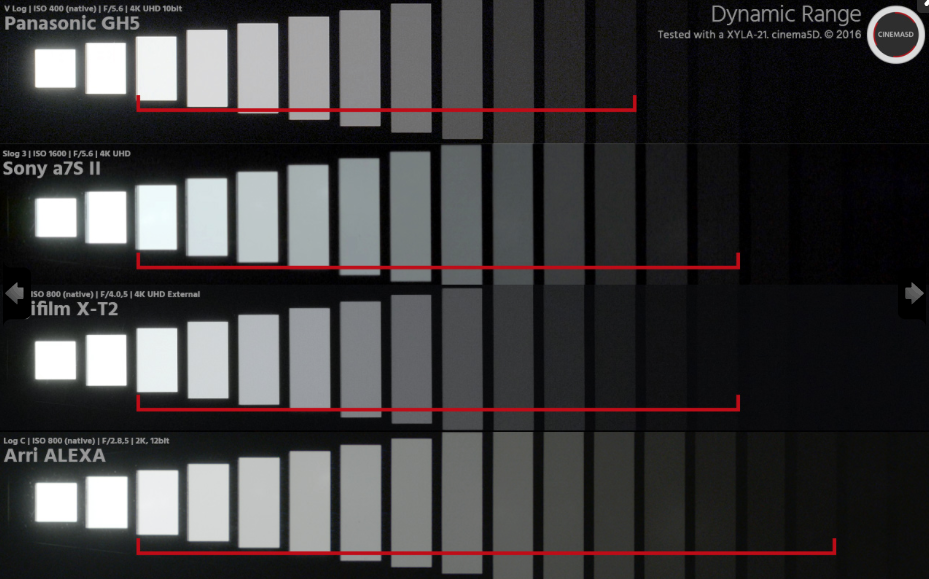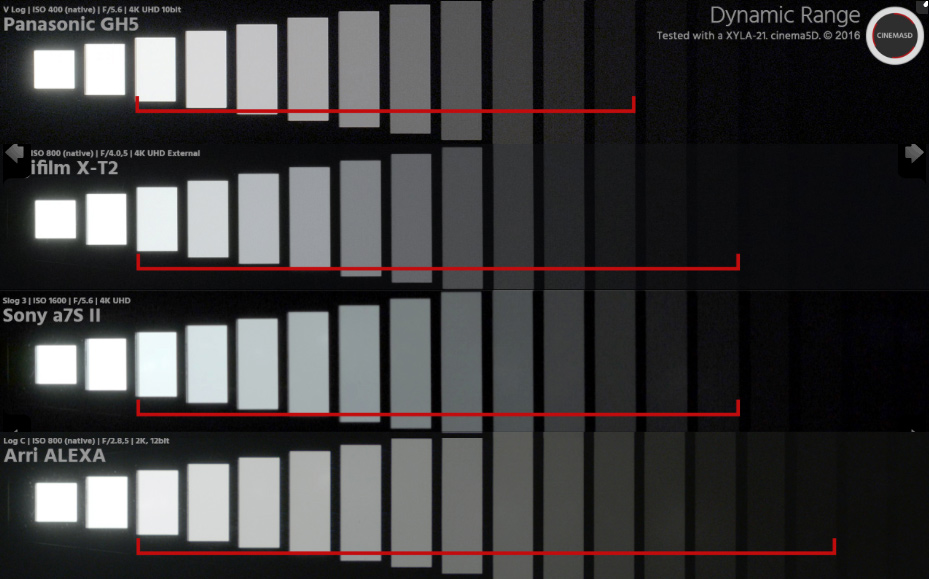Leaderboard
Popular Content
Showing content with the highest reputation on 03/04/2017 in all areas
-

Camera advice. Best image, ignore rest. $3000
webrunner5 and 3 others reacted to Shield3 for a topic
Properly exposed C-log on the C100 II looked to me, with the right lens, every bit as good as the 5d3 in raw. I shot the latter for 2+ years (started in about May of 2013). At the end of the day there's just way too many compromises with the 5d3 raw - tedious workflow (comparatively speaking), camera lock ups, audio sync headaches *if* ML raw even decides to record audio (yes I've used modern nightly builds). Reliability? Don't even compare the two. No instant backup, no ND filters, no XLR audio, no Autofocus, shorter record times, more expensive (1000x or faster) CF cards, super dodgy 3x zoom mode that locked me up often. If I'm shooting something I can do 10 takes on the 5d3 would be a good choice. If it's a bride walking down the aisle, 100 out of 100 times I'd grab the c100. If I need continuous AF, good audio, long battery life, long record times, quick turnaround, (you see where I'm going here) I'll grab the c100. With the Sigma 18-35 1.8 it's like 27-54 2.8 of full frame, and you can still throw that 85 1.2 and blow the hell out of the background on both cameras. Hell in the summer I had the 5d3 OVERHEAT shooting ML raw. Never seen the c100 hiccup ever. That image does have the magic sauce, but so does the c100 in C-Log. I prefer it over the 1dc due to all the headaches. No reliable 1080p30 or 1080p60 raw on the 5d3; c100 II has this. I hate looking at sports shot in 24p, don't you? I can go out with the 10-18 STM, 18-135 and 55-250 and shoot just about anything. Dead silent AF with face tracking, great audio, great image and reliable. No menu diving to toggle the WB, ISO, F/Stop, better focus peaking and punch in while recording. An actual EVF instead of strapping on a damn loupe! But hey...if you must have static shots with the FF DOF and raw, the 5d3 is the only thing in this price range.4 points -
It seems to me like people are simply confusing things. "Look" is a pretty ambiguous word. If you want to argue, stop talking about "a look" and start talking about specifics. Arguing there is no "full frame look" (or any other format look) is silly, because clearly there is a look to different formats (whether that's due to the lenses alone, or a combination of sensor + lenses is debatable, but clearly there's different characteristics at play). I assume what most people really want to argue here is a matter of "equivalency", which seems to be interchanged with the word "look" far to often in this thread for my likings. As such it seems (and reads) as though people are actually arguing about two or more different things whilst it's being taken as all one in the same...3 points
-
Yeah was it 2007 or 2008 when eoshd started? Anyways, I think I've been here a decade, and jcs still hasn't convinced tupp!3 points
-
My thoughts on the Kipon Medium Format "Speedbooster"
Don Kotlos and 2 others reacted to Brian Caldwell for a topic
Let me get this straight - are you denying that the combination of an 80mm lens with a 0.7x focal reducer is a 56mm lens?3 points -

Video File Recovery Tools for Samsung Cameras (WARNING, DON'T BUY STELLAR DATA RECOVERY)
Kisaha and 2 others reacted to Drew Veeneman for a topic
Ok, here's the final result. Using Dmitry Vasilyev's recover tool I was able to recover 42% of the bad video file... roughly 10 mins of a giant 30GB 4K file. At that point NX500 stopped recording good video frames. I'm happy with that... and now knowing how to salvage corrupt video files is awesome. As I encounter other bad video files, I'll write about that here in the future. If I have time in the future, I'll make a video tutorial walking people through the process. Remembering how to use a command prompt from my MS DOS days was the most challenging part. PS: That's Sang Lee from the Carry Trainer YouTube Channel. He's our regular Co-Host and Tactical Ninja.3 points -
Do you realize that what you are saying is that the lenses are alive and sentient and direct photons differently based on the physical sensor size? Everything that Mattias posted here is a collective hallucination and focal reducers don't actually work? Or are you just messing with us for kicks? If not, I look forward to your equations and examples showing your concepts in action.3 points
-
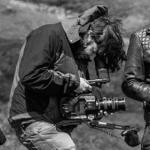
New Blackmagic URSA Mini Pro looks great, but where's the new Pocket Cinema Camera?
Anna Possberg and one other reacted to Oliver Daniel for a topic
I'd like to see: "The New Ursa Micro".... - MFT Sensor. - Can record in 4K, but has a "golden" 2.8k mode at up to 60fps. - Tiltable and Removable Micro Video Assist (so you can put it in a convenient place on a pistol grip gimbal, or monitor from strange angles if adapted for action shots). - Pro option Ursa Micro slots into an accessory which gives you audio options and a handle.2 points -

My thoughts on the Kipon Medium Format "Speedbooster"
jcs and one other reacted to hyalinejim for a topic
This sums up the post-fact world we are currently living in beautifully! No, but you'll more easily see the half tone pattern if you fill your field of view with it. Or, to put it another away it captures less ink. I don't know why you're getting into this analogy as what you're getting at relates to the explanation of why smaller sensors tend to be noisier. I don't think anyone has suggested that exposure changes with sensor size. Well, it's not confusing or meaningless to me and to others who understand the principle of equivalence. I use it to calculate what focal length and aperture will be required to match field of view and depth of field when moving from one format to another. For that reason alone, it's worth developing a coherent understanding of it. @tupp all those small differences in your AB comparison are of course accounted for by the things that you mention, entrance pupil distance, diffraction, etc. etc. These factors don't enter into equivalence calculations, nor do they contradict them. Their effect is so minimal as to be altogether invisible to the average viewer, despite their dramatic apparence to you. Relative to the changes in image wrought by changing focal length, aperture, or sensor size, their effect is negligible. Equivalence is theoretically sound and empirically verifiable. I would encourage dissenters to investigate it more closely and carefully. What does it predict? Do the results match the predictions?2 points -
My thoughts on the Kipon Medium Format "Speedbooster"
jcs and one other reacted to Bioskop.Inc for a topic
I love this forum for the fights that break out! Sometimes, I do wonder how much of it is down to trolling & how much is down to confussion over terminology. The way i see it, is that there is no such thing as a "sensor look", what it we are really talking about is how a sensor transposes the qualities of a given lens to create a picture or image. I have noticed this with the swirly bokeh madness created by the Helios 40-2 85mm f1.9: depending on how big the sensor is (FF, APS-C or s16mm), will have have an effect on how much of the lens circle the sensor will be able to use in order to take a picture. So, no matter what sensor/camera you use, you'll always get the insane swirly bokeh, because that is the LOOK that this lens produces. So when you put the same lens on different sensor sizes, you're not creating a new LOOK, just a different focal lenth & interpretation of the lenses characteristics? Shit, now I think I am confused!2 points -

My thoughts on the Kipon Medium Format "Speedbooster"
Miklos Nemeth and one other reacted to jcs for a topic
Hey Mattias, if after everything I have posted, and everything Brian Caldwell, the designer of the SpeedBooster has posted, has not convinced you that there's no such thing as a full frame or medium format look, no worries. I wasn't trying to win an argument, only to share what I have learned with others. Have you tried working through the equivalence equations, setting up the camera and reviewing the results as I did here? If not, how can you dismiss it if you haven't tried it? If you have any questions about setting it up, feel free to PM me. It would probably make a cool video that a lot of people would be interested in seeing2 points -
I too used to believe in the 'full frame look' myth: http://www.eoshd.com/comments/topic/1917-quick-test-sony-fs700-speed-booster-vs-canon-5d-mark-iii/ Once I ran across the Equivalence equations and did the tests myself, I understood the truth- there's no such thing as a 'full frame look' or any other sensor size look. It's all about the optics. I can still remember what it was like to believe in the myth and have empathy for those who still do.2 points
-
AWWW yisssss lets have it out!! @jcs vs @tupp deathmatch!!! TheREMUST BE A WINNER seriously tho when i STARTED posting on this board years ago certain ppl were having this EXACT same argument... and i still dont know the truth. im gonna start a movement like the 911 truthers called... uhm... sensor size truthers? #sensorsizeTRUTH2 points
-

How will Canon, Sony, etc. respond to Blackmagic Ursa Mini Pro?
Jaime Valles and one other reacted to jcs for a topic
I was gonna say for 1080p, 5D3 RAW, with the exception of DR and highlights (though you can do a lot with Adobe Camera RAW if you have the processing time), is the Baby Alexa Deal of the Century...2 points -

My thoughts on the Kipon Medium Format "Speedbooster"
Don Kotlos and one other reacted to jcs for a topic
@tupp, while we agree the two images are not exact, it was acknowledged that it was not possible to make the settings exact for equivalence. I don't see anything significantly special or magical about the full frame image, and most people cannot even see a difference without a blink test: The simulations showed a perfect match, hopefully this simple diagram will show why: If we take a movie projector and increase the distance from the projector to the screen, the image grows larger and vice versa. Does the image significantly change other than size? This should make it clear that sensor size by itself does not do anything special for the projected or recorded image. Are we in agreement? Now does the size, shape, curvature, and number of lens elements make a difference with respect to DOF, bokeh, and overall image character? Of course, no one has argued that point as these changes occur between lenses designed for the same format, for example the Canon 50mm 1.4 vs the Canon 50mm 1.2. The 1.2 has a much larger lens and of course a larger aperture. What happens when we set both lenses to F1.4, or F2.0? Is there still something 'magical' about the 1.2 lens with the much larger glass? Are they different? Sure they are. Is it significant? Does it matter- we're using the same sensor size? Much more comparisons here between the 1.8, 1.4, and 1.2: https://www.slrlounge.com/canon-50mm-prime/ We haven't changed sensor size, only lenses, and the bokeh and character is quite different, right? Want crazy/weird/artistic bokeh on full frame? Here you go ( http://allphotolenses.com/gallery/item/c_7319.html ): Everyone agrees that lenses make a huge difference and some full frame lenses have bigger optics than some medium format lenses, right? If you still feel that sensor size affects the final projected/captured image, can you provide supporting math, physics, diagrams, and real-world examples supporting your hypothesis?2 points -

How will Canon, Sony, etc. respond to Blackmagic Ursa Mini Pro?
Jaime Valles and one other reacted to Django for a topic
It isn't so much about "affording decent lighting equipment". if you're shooting run & gun, events, weddings etc.. you don't have time to set up lights on every shot.. that's where Canon/Sony cams come in handy. I don't see those type of shooters switching over. For all the marketing, BMD cams are still mostly cinema cams in their ISO handling. They're trying to compete with Red/Arri on a budget. Amazing for studio & narrative with controlled lighting or sunny california outdoor shoots but for other types of shooting or low light conditions they're far from ideal. You'll get all kinds of noise & block artefacts that Da Vinci for sure can't solve.. Also I hope they've fixed that magenta cast issue the 4.6K sensor had!2 points -
I own both cameras as well and definitely think the 5D3RAW image is more impressive looking. I think the C100mk2 looks sharper overall due to it not being a full frame camera and not having a filter on it like the 5D3 has which needs post sharpening. Below are some 5D Raw dng files with a graded versions.2 points
-

Cinema5D slates the Panasonic GH5, calls V-LOG and 10bit "unusable" - They're wrong
Orangenz and one other reacted to Andrew Reid for a topic
This is my whole point about the Cinema5D post They are complaining it's a bit-depth issue with 10bit when it's actually an encoder issue / compression related. And 10bit looks pretty damned good in the standard colour modes to my eye, yet they claim overall it gives zero benefit. Go figure.2 points -
They also don't know how to use the Xyla chart correctly. To properly utilize the chart, you adjust the exposure until the first chip is just barely clipping; then, you count each chip down to find your DR. But they consistently count from the third chip, leaving the exact starting point of each camera's DR up in the air. Panasonic does usability and reliability better then any other hybrid. Most real shooters are willing to trade 2/3 of a stop for a tool that gets out of the way.2 points
-
A7S II NYC
Nikkor reacted to zerocool22 for a topic
Hey, I visited NYC in winter last year for a week and I brought my A7S ii, and made this small travel video, made the edit a bit more narrative allthough it was unscripted footage. Also used a DJI ronin-m, and pp was mostly pp4(which is kind off a hassle, as I like colors from slog2 way more, but the noise at night from slog2 is even worse, however I could have used a stop more as the DR at night is high when you have these building lights, but general rule of A7S is to ETTR 2 stops , so maybe in the end I should have used slog2 and denoised it). Cheers1 point -
Camera advice. Best image, ignore rest. $3000
hyalinejim reacted to HockeyFan12 for a topic
With the C500, at least, the gain is applied on a per-channel basis, so even the RAW footage has a set white balance. The advantage being color is retained in the highlights (but not clipped as saturation is rolled off appropriately). It's not a big deal, though. Rarely a deal killer. The C series suffers from worse color rendering under tungsten than under daylight, anyway.1 point -
The concept of equivalence is a technical one, math and physics. The perception of specific looks is an artistic one. Here's APS-C, full frame, and medium format compared with equivalent settings (thanks @BTM_Pix , from https://***URL removed***/forums/thread/4125975 ): Are the 3 shots pixel perfect? That's not possible 'in the real world' (via simulation it is easy if we don't simulate truly random noise). Consider that if you take two consecutive shots 'in the real world' with the same camera and lens and change nothing, the two shots can't be pixel perfect because of noise alone. The Earth rotates, clouds move, wind blows, etc. However as the photographer who did the test states, the images look more alike than different, and share the same look or character. The argument has been that sensor size alone, which gives rise to special looks, such as 'the full frame look' and 'the medium format look' and 'the large format look' are specific and real, where the sensor size alone gives images a unique, identifiable character and specific look. The actual looks or characters that people are really referring to are: Shallow depth of field Lens artifacts, including bokeh 'style', highlight behavior, contrast, sharpness, color, distortion, defects, etc., as the lens is a kind of optical transfer function or filter, ranging from clinical and accurate such as Zeiss, to something wild like a Helios or Cyclop That's it, there is nothing more. Even with different cameras and lenses, when set up for equivalence, as in the above example, the average person can't tell which camera shot which image as they all have a very similar look or character when using lenses with similar characteristics. The fact that a focal reducer (Speed Booster) works as expected should be sufficient evidence that sensor size is not responsible for any specific look or character. Photography and filmmaking are very technical forms of creating art. Everyone on this forum has the ability to do the simple math and set up their cameras for equivalence: To get the full frame camera equivalent to the crop sensor camera: Multiply the focal length of the lens by the crop factor Multiply the aperture by the crop factor Multiply the ISO by the crop factor squared. Example from my website http://brightland.com/w/the-full-frame-look-is-a-myth-heres-how-to-prove-it-for-yourself/: Let’s do one using the A7S in FF and APS-C (Super 35) crop mode. The crop factor is 1.5. We’ll set up the camera as follows using the Canon 70-200 F2.8L II and the Metabones IV Smart Adapter: Super 35 (APS-C mode on): 70mm, F2.8, ISO 800 Full frame (APS-C mode off): 70mm*1.5 = 105mm, F2.8*1.5 = F4.2, we’ll use F4, ISO 800*(1.5*1.5) = 1800, we’ll use ISO 1600 Can you tell which is full frame and which is crop without cheating or using a blink test? At the pixel level the images are different, however the overall look or character is considered the same. Here's a friendly challenge to @tupp, @Mattias Burling, @Andrew Reid, and anyone else who feels that each format has a specific look which can be characterized: Do your own equivalence tests Share the results online Do not label the images or filenames (so people can't cheat) See if anyone can identify which images are what format, and what are the specific characteristics which allow them to tell the formats apart If anyone needs assistance with the math or settings I can help and I'm sure there are others here who can as well. Remember I used to believe in the full frame look too until I did these tests. Anyone wanting to continue arguing without doing these tests for themselves is either lazy, blocked by their ego, or just enjoys arguing. Nothing wrong with being any of those things, it's part of being human, however we won't be able to take you seriously in this scientific debate1 point
-
And by a strange coincidence, a post has just popped up on DPR with an ad hoc equivalence test someone has done with MF,FF and APS-C. As an aside, the amount of gear he seems to have had with him on a (presumably) non-photographic related business trip makes we wonder if he needs sherpas when he's going on a fully fledged shooting outing. https://***URL removed***/forums/thread/41259751 point
-
New Blackmagic URSA Mini Pro looks great, but where's the new Pocket Cinema Camera?
webrunner5 reacted to mercer for a topic
The beauty of the Pocket and the original BMCC was that enthusiasts and young filmmakers could afford the cameras... these are the same people who are buying the Ursa now. Those Ursa Pro owners will eventually graduate to a Red or maybe an Alexa and that Pro will collect dust or be sold on the used market. Without a base cinema model with updated specs... it doesn't have to be 4K, but 2.5K at multiple frame rates, maybe no need for IR filtratation, and a better screen and BM will secure the next "generation" of filmmakers to climb the BM ladder on their way to an Alexa.1 point -

How will Canon, Sony, etc. respond to Blackmagic Ursa Mini Pro?
jcs reacted to webrunner5 for a topic
Yeah, they have been dangling the carrot for a long time!1 point -

My thoughts on the Kipon Medium Format "Speedbooster"
hyalinejim reacted to fuzzynormal for a topic
I learned still photography on 35mm film, and that's typical of what people often talk about regarding "equivalence" online; which makes it easier to grasps from the get go the whole debate about it all. If you came into the camera enthusiasm/hobby these days, god help you. Ignorance mixed with all the jargon and all the different sizes of things? Yeah, we can understand why it'll make one's head spin. Mine still does because the maths on all this are not symmetrical. Sliding scales, expotentials, and numerical gradients. Physics stuffs. But here's my rather redundant summation and basic understanding: shooting a 50mm lens set to f2 on an M43 is "equivalent" to what would happen (circle-of-confusion-depth-of-field-wise -- not exposure-wise) if you put a 100mm f4 on a full frame sensor. Here's where the frustrating part comes in, I think. Folks use f-stop to generally talk about what it take to achieve a certain depth-of-field. You know if you're shooting glass wide open, you're going to be increasing the out-of-focus stuff in the frame, 'kuz that's how lenses work. Director: "Hey, we need shallower DOF on this shot, go to a f2.8" DP "Got it." Those folks ain't talking directly about how many photons the want passing through the lens. Rather, they're talking about creating a visual look. So "f-stop," becomes an easy marker to achieve a certain visual result. That term can get convoluted in the broader technical consideration. (And, hoo boy, let's not even bring in t-stops to this part of the discussion, lest brains start to implode) The thing about full frame sensors, and even larger sensors, is that you can achieve the very shallow depth-of-field easier and with wider lenses than you can if you have a smaller sensor. So, when doing a portrait shot, one can whack some back ground out of focus effortlessly and rather affordably with a cheap 50mm f2 lens on a full frame. Yes, you can get such "equivalent" DOF with something like M43, but then you're spending a lot of cash to get more exotic lenses that'll shoot f0.95 or something. The good thing about full frame, pragmatically speaking, is that you can easily get shallow DOF while closer to a subject. This is cool because when you have a wider field of view and shallow depth-of-field, the visual creates a sort of 3D pop. The in-focus bit separated easily from the background. Not to mention that motion in wider field of view has a different visual quality. I believe this is referenced as "parallax," which can also has a quality that should be taken into account. Also, again, FF lenses cost less to accomplish the same shallow DOF/FOV than M43 lenses. Other than that, I think a lot of people on-line in camera forums maybe don't have comprehensive wisdom, (including me) but certainly have a lot of notions they want to assert. More often than not, it seems like those assertions are wrapped up in some rhetorical ego. Seems like people want to hear and write affirmations about their current version of reality rather than actuality. So it's easy to understand why it's all a mix-up for readers of these words. The phrase "circle-of-confusion" is apt, in more ways than one ain't it? For me, I have a general knowledge of what stuff looks like simply because I've played around with this crap for decades. All one really has to do is put their eyeballs on results they create themselves and it's all obvious. It may remain inarticulated, but it does become obvious.1 point -
Sigma ART 35, 50 & 85mm diameter of front element ?
Mr. Ambiguous reacted to pablogrollan for a topic
If you don't mind the inconvenience of not having proper "cinema ergonomics" and focus breathing, fast-sharp-cheap is doable. After all, Zeiss CP2s are rehoused stills lenses and there are many, many used fast and wonderful primes in pristine condition on sale at ebay, Keh and similar places. Anamorphic is another story, though... I'm not convinced by the quality I've seen from any of the anamorphic adapters out there...1 point -
Thanks Orangenz, I'll try that.1 point
-
Sigma ART 35, 50 & 85mm diameter of front element ?
jonpais reacted to pablogrollan for a topic
In cinema lenses the housing is kept consistent across the whole setup regardless of the glass element size so that you can swithch lenses without having to reposition the follow focus and mattebox, but in photo lenses the filter thread size is pretty much the diameter of the front element plus 1 or 2 mm because the goal is to make the smallest lens possible without compromising speed or optical quality. Usually... but the Sigma 50mm f1.4 has a 77mm filter thread and weights over 800 gr. which I'm not so sure means a huge optical improvement over my old Nikkor 50mm f1.4 with a 52mm thread. Same applies to some Zeiss/Contax designs which are very compact yet fast and optically superb... With stills lenses there isn't as direct a correlation as with cinema lenses...1 point -
I own this lens now since a couple of weeks and I tend to state that is next to perfect for my needs. the af is fast, rendering awesome and the focus ring is very smooth - and like the Pana 20mm, the focussing isnt influenced by the speed you turn the ring - very rare for m43 lenses and very awesome! i can totally recommend you this lens, solely based on the focus ring alone.1 point
-
This is more a discussion of shooting with them. Try starting a new topic. The download link is, as far as I know, an automated process so that means either you typed in the wrong email address or your junk email settings are up the spout.1 point
-

Panasonic GH5 - all is revealed!
Ken Ross reacted to hyalinejim for a topic
AF is snappy enough. Watch when the dancer ducks below frame and pops back up. Focus shifts to the background and then back to her quite quickly. Towards the end the movement increases and she gets closer to the camera. Rather than having AF constantly on, which I can't really envisage using, I presume there's some function whereby you can press a button to search for AF, and once you hit it you let it go and AF stops? And does touchscreen AF work like this?1 point -

How will Canon, Sony, etc. respond to Blackmagic Ursa Mini Pro?
jcs reacted to hyalinejim for a topic
Here's a screengrab of an ISO200 chart shot in daylight balanced lighting I found at this link: http://www.drewmoe.com/digitalnoise.shtml Here's a shot I took of a chart in sunlight on a 5D3. Brought it into ACR, applied Cinelog C profile, brought it into Rec709 After Effects and exported as RGB TIFF: I brought them in to Photoshop and blurred both shots to eliminate noise and masked off the squares. I placed Cinelog behind Arri and used a quick curves adjustment to match the exposure using the bottom squares (because the Arri shots had a Rec709 lut applied and the Cinelog is still in Cineon gamma). This is the result, Arri is the set on top and 5D3 ML Cinelog C is the set underneath: It's not an exact match, but it's not bad considering these are shots from 2 different cameras from 2 totally different shoots... and also when you consider the price difference. I'd love to get both cameras side by side to shoot the same chart at the same time.1 point -
Imagine that! But even if it was just 1080/24p only with the alexa sensor... I'd be all over it... that sensor is pure magic1 point
-

Panasonic GH5 - all is revealed!
jonpais reacted to hyalinejim for a topic
If it goes down to minus eleven I'll be happy1 point -

PAS SiNGLE
funkyou86 reacted to Dr. Verbel' for a topic
Looks nice, but too bulky and complicated, man. Too many unnecessary details that make their error in the final result. Focusing attachments like Rectilux give more convenience, it is a pity that while there are no such large to fit with that huge ana. Cons - changing squeeze factor, when focusing, too slow focus from one object to other. Some good footage from wide open aperture, for example, F:2 or wider? I shooted earlier short test. Do you shoot like this from your construction?1 point -
Lenses
Gregormannschaft reacted to Bioskop.Inc for a topic
Jupiter 9 is a lovely small lens - soft & dreamy wide open at f2, but stop down to f2.8 & it is sharp. Beware that there are 2 versions of it & i've only got the older/orignal version - so can't speak about the newer version (which has a thick pre-set aperture ring). If size & weight aren't a problem then go for the Helios 40-2 85mm f1.9 - again dreamy wide open (with the added super swirly bokeh), but stopped down to f2 & it's sharp. The only downsides are the weight (1kg) & once stopped down the bokeh is star shaped, unlike the Jupiter 9.1 point -

How will Canon, Sony, etc. respond to Blackmagic Ursa Mini Pro?
Jaime Valles reacted to Django for a topic
One area where Sony/Canon destroy BMD is ISO performance. Ursa's base ISO is 400/800 and maxes out at 1600. This alone rules them out of quite a few situations..1 point -
Cinema5D slates the Panasonic GH5, calls V-LOG and 10bit "unusable" - They're wrong
Clayton Moore reacted to Eno for a topic
@hyalinejim, from what I saw, Fuji by default applies some stronger NR cause the detail is lower than the GH5 and both of them are suppose to be resizing from a 5,5K image to 4K. @TheRenaissanceM, you are very correct about their lack knowledge how to properly measure DR. It is as Driftwood said: "Cineon adaptation \ log curve interpretation generally looks different from toe to shoulder between different cameras. Its like Slog 2 is good for highlight detail, slog3 for bringing out shadow detail and vlog sits somewhere in between if not too unlike slog3! C log curve differs too. The point is you have to expose\grade correctly with Log & for the camera and DR youve got."1 point -
How will Canon, Sony, etc. respond to Blackmagic Ursa Mini Pro?
Jaime Valles reacted to hijodeibn for a topic
Canon is not going to do anything, no need at all, and Sony will continue doing the same thing, crapy skin-tones in 6-month depreciated cameras……GH5 is the big winner here, it is going to sell like french fries, I think the only that could have stopped in some portion the mayor GH5 Tsunami should have been the announcement of a pocket v2….1 point -
You may like to see these pics of the new Fujinon 50-135mm Cabrio in E Mount - yes E mount !! - WHY OH WHY !!!! This lens is causing quite a stir since it was announced , Fujinons legendary Cabrio quality in an affordable lens - Mathew Ducclos is going to mod it and hack an inch off the back and add a Canon mount - now that is interesting now its usable by the masses ! I did speak with Tadashi Sasaki of Fujinon who said they MAY offer this lens in Micro 4/3 as it is possible to make without a huge retool - Now this lens with a GH5 would be a killer indie feature film makers dream ! Also the SLR Magic 8mm was at the show on the Holden stand on a GH5 - see pics ....approx £300 - available now1 point
-

How will Canon, Sony, etc. respond to Blackmagic Ursa Mini Pro?
Jaime Valles reacted to Andrew Reid for a topic
They don't need to.1 point -
The images look so 3D1 point
-
Camera advice. Best image, ignore rest. $3000
Shield3 reacted to HockeyFan12 for a topic
This just isn't true if you know how to expose properly. There's a tendency to over-expose the CX00, but its image is better overall than the 5D III RAW (and yes I've owned both since they were released, and no I don't think either is TOTL amazing, either). The CX00 is cleaner, has better DR, has better noise texture, is sharper, has better color rendering for video and holds highlight saturation properly, etc. The lack of "full frame" look is subjective and that does favor the 5D for most users who like that look. This is a common myth spread by people without light meters lol. Having owned both and used both on the same shoots, I'd frequently hear this myth repeated and was dumbfounded. Had any of these people actually A/Bd the cameras with proper exposure settings and proper handling of super whites? You'll quickly notice that the 5D RAW's highlights desaturate in an unsightly way when pulled back in ACR whereas the 100-109 IRE range from AVCHD recovers very cleanly, leading not only to better DR overall, but to proper color retention in the highlights without chroma clipping (as Sony and Panasonic exhibit). The issue is that people tend to vastly overexpose the CX00. C LOG puts 18% gray at 32 IRE or something, VERY low. RAW is gamma agnostic, but exposing the 5D like you'd expose a normal dSLR works well and leads to a pleasant over/under even exposing by eye. You can't do this with a log gamma and WideDR has its own problems. That said, it also shows how a more difficult workflow leads to a better image. I work with a lot of poorly shot CX00 footage and most of the 5D RAW footage I see online looks great. I think it's more intuitive to expose the 5D but harder to do everything else, its workflow demands attention and the practice of shooting with it is a little more rigorous. People get better results because they put in more work setting up shots and in post and because the exposure is more intuitive for those making the leap from a dSLR.1 point -
And you are still complaining about the image?, could you please share some of your work with the C100 and the atomos shogun and tell us what is wrong with the images?.....could be camera operator lack of skills?1 point
-
Looks like you never used the C100 I or C300 I with a Ninja Star, you get pristine images from this combination, I highly recommend to add a Ninja Star to these cameras, specially in low light....and since the Ninja Star use generation one Cfast cards the cost is very affordable..... STM lens are incredible with the C100, I am just using the 18-135 and I am very happy.....what are you going to use for night shooting?, I am going with a Canon 50mm 1.4 and a Canon 28mm 1.8, but I would like to hear from other options out there.....1 point
-
My thoughts on the Kipon Medium Format "Speedbooster"
tupp reacted to Mattias Burling for a topic
Its all down to taste I guess. Personally I have never owned a combo with creamier bokeh before. Not with 0.95 lenses, not M-Mounts, Sony FE, Canon-L or Nikon FX. I just love how soft blurred edges get. How everything seems to flow into eachoter and how "un harsh" bokeh balls become without a bunch of specs in them. Just light.1 point -

Camera advice. Best image, ignore rest. $3000
Shield3 reacted to Tim Sewell for a topic
I have to plus-1 for the C100 mkii. I recently sold my other cameras to buy a secondhand one (GBP3000) and although I've been pretty much confined to quarters due to a combination of work and bad weather since it arrived, what little I've been able to shoot has given me an experience I never had with any of the others. I loaded the log footage into FCPX, applied a technical LUT and felt my jaw hit the floor. Just an all-round gorgeous image. Experiments in the kitchen in low light were also mandible-lowering, it simply knocks the socks off anything I've ever used before in the way the IQ holds up at high ISOs. Add to that the ease-of-use, the astonishing battery life, the parsimonious-yet-gradeable codec, the NDs and you have a machine that you just want to pick up every time you have a moment spare. I have the 55-250 and 18-135 STMs arriving over the next few days and, weather permitting, an afternoon filming my son in a tennis tournament at the weekend and I just can't wait. I'll just also add that I've had an idea for a micro-documentary brewing in my mind for some time, but just couldn't figure out a way to do it single handed with my previous gear. Just my around-the-house experience so far with the C100 mkii has finally given me the confidence to set to work on it and I have a meeting soon with the subject to get it all in place - so thanks, Canon!1 point


